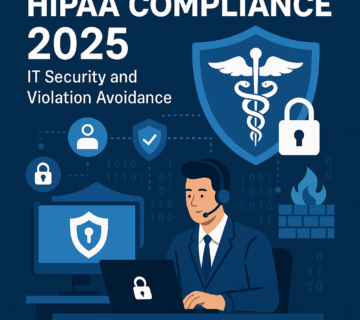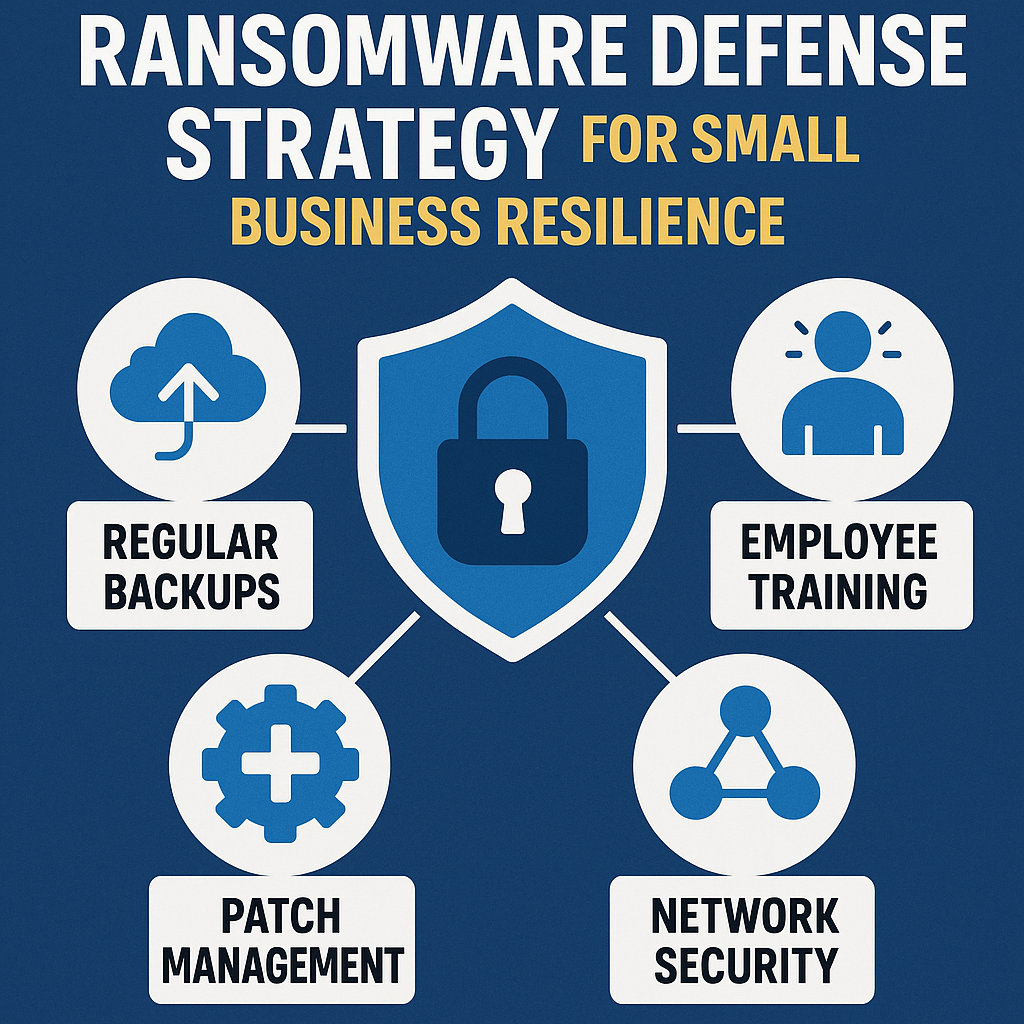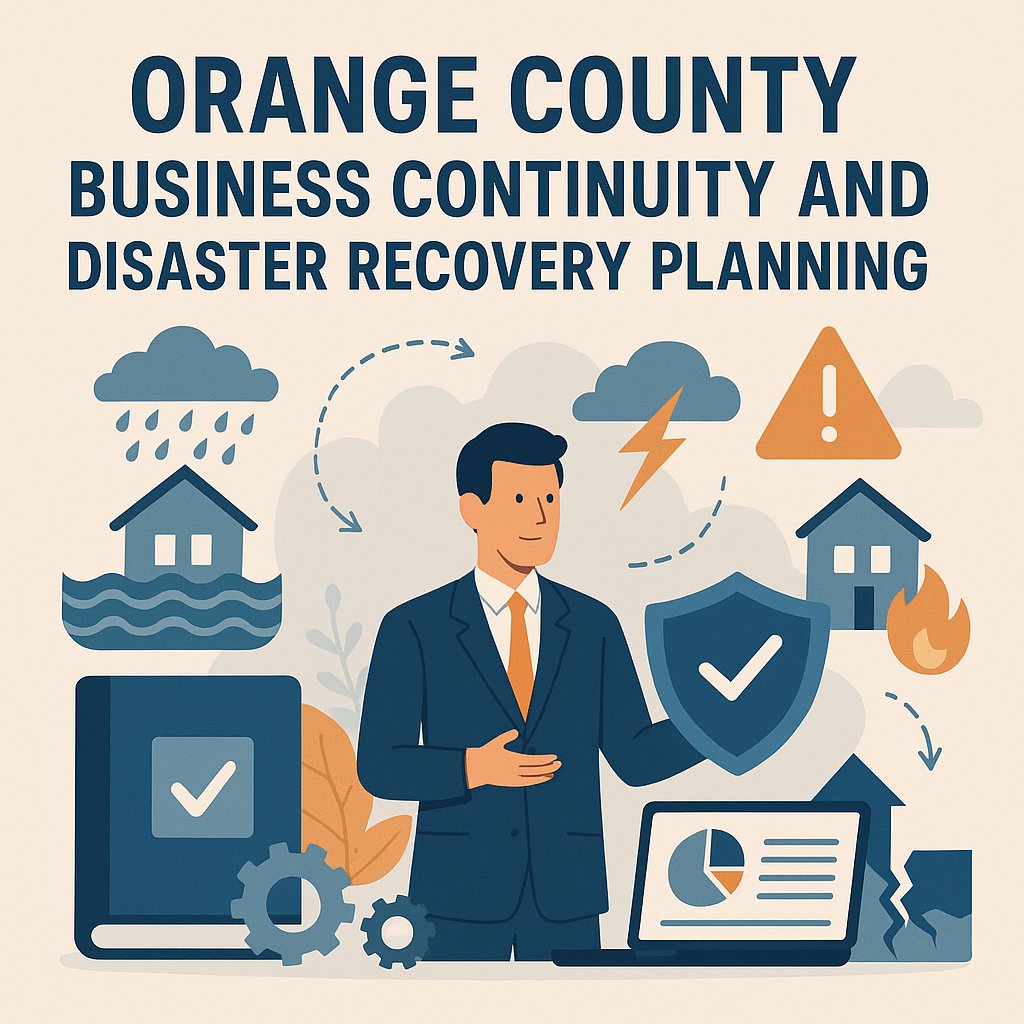AI for IT Leaders: How to Safely Deploy Internal Chatbots and Knowledge Tools Without Data Leaks
🎙️ Dive Deeper with Our Podcast!
Securing Internal AI Chatbots and Knowledge Tools
The promise of artificial intelligence in the workplace is undeniable. According to recent industry reports, businesses implementing AI-powered knowledge tools experience up to 40% improvements in employee productivity and dramatic reductions in time spent searching for information. However, for IT leaders in Orange County and across Southern California, the excitement around deploying internal AI chatbots comes with a sobering reality: one misconfigured system could expose your most sensitive client data, violate compliance requirements, or create devastating security vulnerabilities.
The challenge isn’t whether to adopt AI tools—it’s how to implement them safely. Many organizations rush into chatbot deployments without proper governance frameworks, only to discover they’ve created new attack surfaces or inadvertently trained AI models on confidential information. For businesses in healthcare, finance, legal, and other regulated industries, the stakes are particularly high.
This comprehensive guide walks IT leaders through the process of safely deploying internal chatbots and knowledge automation tools using proven architectures like Retrieval-Augmented Generation (RAG) and Model Context Protocol (MCP). You’ll learn how to harness the productivity benefits of AI while maintaining complete control over your sensitive data.
Understanding the Real Risks of AI Chatbot Deployments
Before diving into solutions, IT leaders must understand exactly what’s at risk when implementing AI systems. The dangers extend far beyond theoretical concerns—they represent genuine threats to business operations, client relationships, and regulatory compliance.
Data Exfiltration Through AI Training
One of the most insidious risks involves how commercial AI platforms handle the data you feed them. Many popular chatbot services use customer interactions to train and improve their models. When employees paste sensitive client information, proprietary code, or confidential business strategies into these systems, that data may become part of the AI’s training corpus. This means your competitive advantages could theoretically be surfaced in responses to other users, including competitors.
Several high-profile incidents have already demonstrated this risk. Companies have discovered their confidential information appearing in AI responses after employees used public chatbot services for work tasks. For businesses handling protected health information, financial records, or legal documents, this represents both a security breach and a compliance violation.
Prompt Injection and Manipulation Attacks
Sophisticated attackers have developed techniques to manipulate AI chatbots through carefully crafted prompts. These “jailbreak” attempts can trick AI systems into revealing information they’re supposed to protect, bypassing access controls, or performing unauthorized actions. When your internal chatbot has access to sensitive knowledge bases or business systems, prompt injection vulnerabilities create serious security gaps.
Uncontrolled Access to Sensitive Information
Many organizations implement AI chatbots without proper access controls, essentially creating a new pathway to sensitive data that bypasses existing security measures. An employee who shouldn’t have access to financial records might be able to query them through an improperly configured chatbot. This violation of the principle of least privilege can lead to insider threats, whether intentional or accidental.
Compliance and Regulatory Violations
For businesses operating under HIPAA, CMMC, SOC 2, or other regulatory frameworks, AI chatbot deployments create new compliance obligations. Regulators are still developing guidance around AI systems, but existing data protection requirements clearly apply. An AI tool that exposes protected information or fails to maintain proper audit trails can trigger significant penalties and damage client trust.
The Safe Architecture: RAG and MCP for Enterprise AI
The solution to these challenges lies in implementing AI chatbots using architectures specifically designed for enterprise security and data protection. Two frameworks have emerged as industry standards for safe AI deployment: Retrieval-Augmented Generation and Model Context Protocol.
Retrieval-Augmented Generation: Keeping Your Data Separate
RAG represents a fundamental shift in how AI chatbots access information. Instead of training an AI model on your sensitive data or sending that data to external AI services, RAG systems keep your knowledge base completely separate and retrieve relevant information only when needed.
Here’s how RAG architecture protects your data. When an employee asks a question, the system first searches your internal knowledge base using traditional search techniques. It retrieves only the specific, relevant documents or data snippets needed to answer that particular question. These retrieved pieces are then provided as context to the AI model along with the user’s query. The AI generates a response based on this temporary context, but your underlying data never becomes part of the AI’s training or permanent knowledge.
This architecture provides several critical security advantages. Your sensitive data never leaves your infrastructure or gets incorporated into external AI models. You maintain complete control over what information the system can access through your existing access control mechanisms. Each query operates independently, so there’s no risk of context bleeding between different users or sessions. You can implement granular permissions, ensuring employees only receive answers based on data they’re authorized to access.
Model Context Protocol: Standardized Security Controls
MCP takes the security framework further by standardizing how AI applications interact with your data sources and business systems. Think of MCP as a secure communication protocol that ensures AI chatbots follow strict rules when accessing information.
Under MCP architecture, all data access goes through defined connectors that enforce security policies. These connectors act as gatekeepers, validating permissions, logging all access attempts, and ensuring compliance with your governance policies. Rather than giving an AI system broad access to your databases or file systems, MCP implementations provide controlled, audited pathways for information retrieval.
The protocol also enables sophisticated monitoring and governance capabilities. IT teams can track exactly what information the chatbot accesses, which users are making which queries, and how the system behaves under various scenarios. This visibility is essential for both security monitoring and compliance documentation.
Step-by-Step Guide to Safe AI Chatbot Deployment
Successfully implementing internal AI chatbots requires a systematic approach that prioritizes security at every stage. Here’s a practical walkthrough of the deployment process.
Phase One: Define Your Use Case and Governance Requirements
Start by clearly articulating what problems you’re solving with AI chatbots. Are you trying to help employees find information faster in your internal knowledge base? Do you want to automate responses to common IT support questions? Are you building a tool to assist customer service teams?
Each use case has different security implications and governance requirements. A chatbot that accesses customer financial records requires much stricter controls than one that helps employees find company policies in your handbook. Document your specific use case and identify all the data sources the system will need to access.
Next, map your compliance obligations. If you operate in healthcare, HIPAA requirements will shape your implementation. Financial services firms need to consider SEC and FINRA rules. Legal practices must protect attorney-client privilege. Create a checklist of all applicable regulations and how your AI deployment must address them.
Establish clear governance policies before any technical implementation begins. Decide who has authority to approve AI tool deployments, what training employees need before using AI systems, how you’ll monitor for misuse, and what audit trails you’ll maintain. These policies form the foundation of your entire implementation.
Phase Two: Choose Your Technology Stack
Selecting the right technology components is crucial for maintaining security while achieving your productivity goals. Your stack should include several key elements working together.
For the AI model itself, consider whether you’ll use commercial API services from providers like Anthropic, OpenAI, or others, or if compliance requirements necessitate deploying open-source models on your own infrastructure. Commercial services offer superior performance and ease of implementation but require careful contract review to ensure your data won’t be used for training. Self-hosted models provide complete data isolation but require more technical expertise and infrastructure investment.
Your knowledge base infrastructure needs careful design. This includes document storage systems, vector databases for semantic search, and indexing mechanisms that enable fast retrieval. The knowledge base should integrate with your existing access control systems so that the chatbot respects the same permissions your employees already have for different data sources.
Implement a secure gateway layer that mediates all communication between users, the AI model, and your data sources. This gateway enforces authentication, logs all interactions, applies content filtering rules, and provides the central point for security monitoring. Never allow direct communication between end users and AI models without this intermediary layer.
Phase Three: Implement Data Protection Measures
With your technology stack selected, focus on ensuring your sensitive information stays protected throughout the AI interaction lifecycle.
Begin by classifying all data the chatbot will access according to sensitivity levels. Public information like company policies can be handled differently from confidential client records or proprietary business strategies. Create clear tags or labels for different data classifications and ensure your retrieval system respects these classifications when responding to queries.
Implement encryption both at rest and in transit for all data the chatbot system touches. This includes your knowledge base storage, temporary data held in vector databases, and all communications between system components. Use industry-standard encryption protocols and regularly rotate encryption keys according to your security policies.
Configure your RAG system to retrieve only the minimum necessary information for each query. If someone asks about a specific client account, the system should retrieve only that account’s information, not entire databases of client records. This principle of data minimization reduces exposure if security controls fail and makes it easier to comply with privacy regulations.
Establish data retention and disposal policies for all AI-related information. Decide how long you’ll keep query logs, what gets included in those logs, and when data gets permanently deleted. Some industries require retaining records for specific periods, while privacy regulations may mandate deletion after certain timeframes.
Phase Four: Build Access Controls and Authentication
Proper access controls ensure employees can only use the AI chatbot to access information they’re already authorized to see through normal channels.
Integrate your AI chatbot with your existing identity management system. Whether you use Active Directory, Azure AD, Okta, or another identity provider, the chatbot should authenticate users through the same mechanism as your other business applications. This centralization simplifies administration and ensures consistent security policies.
Implement role-based access controls that map to your organizational structure. The retrieval component of your RAG system should check user permissions before returning information from your knowledge base. An employee in accounting shouldn’t receive answers based on HR records, even if that information might be relevant to their question.
Consider implementing additional authentication layers for highly sensitive information. Multi-factor authentication could be required when the chatbot needs to access financial records or client confidential data. Time-based access restrictions might limit when certain types of information can be queried. Geographic restrictions could prevent access from unexpected locations.
Phase Five: Implement Monitoring and Anomaly Detection
Even with strong preventive controls, you need continuous monitoring to detect potential security issues or misuse of your AI systems.
Establish comprehensive logging that captures every interaction with your chatbot. This should include the user making the query, the exact question asked, what data sources were accessed to formulate the response, when the interaction occurred, and any errors or access denials. These logs serve both security and compliance purposes.
Deploy anomaly detection mechanisms that flag unusual behavior patterns. Someone suddenly making hundreds of queries in a short period might indicate account compromise or data exfiltration attempts. Queries for information unrelated to someone’s job function could suggest insider threat activity. Users repeatedly hitting access denials might be probing for security weaknesses.
Create alerting workflows that notify your security team when suspicious patterns emerge. Determine what constitutes normal usage and set thresholds for triggering alerts. Balance sensitivity to catch genuine threats without overwhelming your team with false positives.
Regular security reviews should examine query patterns, access trends, and system performance. Look for opportunities to refine your security controls based on actual usage patterns you observe.
Phase Six: Train Your Users and Establish Clear Policies
Technology alone cannot ensure safe AI deployment. Your employees need proper training and clear guidelines for acceptable use.
Develop comprehensive training materials that explain what your internal AI chatbot can and cannot do. Help employees understand the security architecture so they appreciate why certain limitations exist. Provide clear examples of appropriate and inappropriate uses.
Create an acceptable use policy specifically for AI tools. This should address whether employees can input client names or identifiers, what types of questions are acceptable, prohibited uses, and consequences for policy violations. Make this policy easily accessible and require annual acknowledgment from all users.
Establish clear escalation paths for when employees encounter problems or have questions the chatbot cannot safely answer. Sometimes the right response is directing people to human experts rather than forcing the AI to provide potentially problematic information.
Advanced Security Considerations for Enterprise Deployments
Organizations with particularly stringent security requirements or complex compliance obligations need to consider additional protective measures beyond the foundational architecture.
Air-Gapped and On-Premises Deployments
Some businesses cannot accept any external AI service, even with strong contractual protections. Healthcare organizations with extremely sensitive patient data, defense contractors subject to CMMC requirements, or financial institutions with strict data residency rules may need completely isolated systems.
Air-gapped deployments run the entire AI stack on your infrastructure with no internet connectivity. This provides absolute assurance that your data cannot be exfiltrated to external services. The tradeoff involves significant technical complexity, ongoing maintenance burden, and potentially lower AI performance compared to cutting-edge commercial models.
On-premises deployments that maintain some connectivity offer a middle ground. You host the AI models and knowledge base infrastructure in your own data center or private cloud environment while potentially using internet connectivity for model updates or administrative functions through tightly controlled channels.
Content Filtering and Output Validation
Even when your data stays secure, you need assurance that AI-generated responses don’t inadvertently expose sensitive information or violate policies.
Implement output filtering that scans AI responses before delivering them to users. These filters can detect and redact personal identifiers, financial account numbers, credentials, or other sensitive data patterns. Regular expression matching, named entity recognition, and custom detection rules work together to catch problematic content.
Consider implementing human-in-the-loop workflows for certain high-risk scenarios. Before the chatbot provides answers involving particularly sensitive topics, route the response to a human reviewer for approval. While this reduces automation benefits, it provides essential protection for edge cases your automated controls might miss.
Federated Search and Multi-Tenant Architecture
Organizations managing data for multiple clients or business units need careful architectural planning to prevent data mixing between tenants.
Federated search architectures maintain strict separation between different data repositories. When an employee queries the chatbot, the system first determines which data sources they’re authorized to access based on their organizational affiliation, then only searches within those bounded repositories. This architectural separation prevents any possibility of information bleeding across client boundaries.
Implement separate vector embeddings and retrieval indexes for each tenant or data classification tier. Even though this increases storage and computational requirements, the security benefits justify the investment for organizations managing highly sensitive, segregated information.
Measuring Success: Metrics for AI Governance
How do you know if your AI chatbot deployment is working safely? Establish clear metrics and regularly evaluate them to ensure ongoing security and value delivery.
Track security metrics including the number of access control violations detected, query patterns that trigger anomaly alerts, failed authentication attempts, and how quickly your team responds to security incidents. These metrics help you assess whether your protective controls are working effectively.
Monitor compliance metrics relevant to your industry. For HIPAA-regulated entities, this might include tracking all accesses to protected health information through the chatbot. Financial services firms should monitor for any potential disclosure of material nonpublic information. Legal practices need audit trails demonstrating attorney-client privilege protection.
Measure operational effectiveness metrics to ensure the system delivers value that justifies the security investment. Track query response times, accuracy of information provided, employee satisfaction scores, reduction in time spent searching for information, and volume of support tickets deflected by the chatbot. An AI system that doesn’t provide genuine business value won’t maintain the executive support needed for proper ongoing investment in security.
Common Pitfalls and How to Avoid Them
Even well-intentioned AI deployments can encounter serious problems. Learning from common mistakes helps you avoid repeating them.
Many organizations underestimate the data preparation work required for effective RAG implementations. Your knowledge base needs proper structure, consistent formatting, regular updates, and quality metadata. Inadequate data preparation leads to poor chatbot performance, which tempts people to circumvent security controls by using external services instead.
Another frequent mistake involves insufficient testing before broad deployment. Security controls that look solid in theory may have practical weaknesses that only emerge under real-world usage patterns. Conduct thorough testing with realistic scenarios, including intentional attempts to bypass security measures, before rolling out to your entire organization.
Failed change management represents a significant risk factor. Employees accustomed to freely using consumer AI tools may resist restrictions you impose for security reasons. Without proper communication about why these controls exist and how they protect both the organization and employees themselves, you’ll face compliance problems and shadow IT issues.
Neglecting ongoing maintenance creates security gaps over time. AI technology evolves rapidly, new vulnerabilities emerge, and your business needs change. Establish regular review cycles for updating your AI governance policies, refreshing security controls, and enhancing the system based on lessons learned.
Frequently Asked Questions
What’s the difference between consumer AI chatbots and enterprise AI implementations?
Consumer AI chatbots like ChatGPT or Claude are designed for general use and often train on user inputs to improve their models. Enterprise implementations using RAG and MCP architectures keep your data completely separated from AI training, maintain strict access controls, provide audit trails for compliance, integrate with your existing security infrastructure, and give you complete control over where your data is processed and stored.
Can we use our existing knowledge base and document management systems with RAG architecture?
Absolutely. RAG systems are specifically designed to work with your existing data repositories. The implementation involves creating connections to your current SharePoint, Confluence, document management systems, databases, or other knowledge sources. Your employees continue using familiar storage locations while the AI chatbot can search across all these sources simultaneously to find relevant information.
How long does it typically take to deploy a secure internal AI chatbot?
Timeline depends on several factors including the complexity of your data sources, strictness of your compliance requirements, size of your knowledge base, and whether you’re using commercial AI services or self-hosting models. A straightforward implementation for a small to medium business might take four to eight weeks from planning through initial deployment. More complex environments with extensive compliance requirements could require three to six months for a complete rollout.
What happens if an employee tries to access information they shouldn’t have permission to see?
Your RAG implementation should be configured to respect existing access controls. When someone queries information they’re not authorized to access, the retrieval system simply won’t include that data when formulating a response. The chatbot would indicate it cannot answer that specific question or doesn’t have information on that topic. Your security logging would capture the access attempt for monitoring purposes, and repeated attempts to access unauthorized information would trigger alerts to your security team.
Do we need to worry about AI hallucinations with RAG architecture?
RAG significantly reduces hallucination risks compared to standard AI chatbots because responses are grounded in your actual documents rather than the AI model’s training data. However, no system is perfect. The AI might still occasionally misinterpret retrieved information or make connections that aren’t quite accurate. This is why output validation, confidence scoring, and citing source documents in responses are important components of enterprise implementations.
How much does it cost to implement secure AI chatbots compared to just using free consumer services?
While consumer AI services appear free, using them for business purposes exposes you to significant costs from potential data breaches, compliance violations, and competitive disadvantages if your information leaks. Secure enterprise implementations require investment in infrastructure, licensing, and expertise, but this cost should be compared against your risk exposure. For most businesses handling sensitive information, the security investment is substantially cheaper than a single data breach incident. Many organizations find their AI chatbot pays for itself through productivity improvements within the first year.
Can our AI chatbot integrate with other business systems beyond just knowledge bases?
Modern AI integration architectures support connections to virtually any business system with an API. Your chatbot could potentially query customer relationship management systems, retrieve information from accounting software, check inventory systems, access project management tools, or interact with custom business applications. Each integration requires careful security planning to ensure appropriate access controls and data protection, but the technical capability exists for comprehensive business system integration.
What should we do if we discover a security issue with our deployed AI chatbot?
Establish an incident response plan specifically for AI systems before deployment. If you discover a security issue, immediately assess the scope of potential data exposure, contain the problem by temporarily restricting system access if necessary, review logs to understand what information may have been accessed inappropriately, notify affected parties as required by applicable regulations, implement fixes to address the vulnerability, and document the incident and remediation steps for compliance purposes. Having this plan in place before problems occur enables faster, more effective response.
How do we balance AI innovation with security requirements?
The key is recognizing these aren’t competing goals but complementary ones. Proper security architecture enables sustainable innovation by building trust with clients and stakeholders. Start with a strong security foundation using proven architectures like RAG and MCP, then innovate within that framework. Many of the most advanced AI capabilities are actually more achievable with secure, controlled implementations because you can integrate deeper into business systems when you have proper governance in place.
What training do our IT staff need to manage AI chatbot systems?
Your IT team should understand AI fundamentals including how large language models work and their limitations, RAG architecture principles and implementation, your chosen AI platform’s specific security features, prompt engineering and optimization, monitoring and troubleshooting AI systems, and applicable compliance requirements for your industry. Many technology providers offer certification programs specifically focused on enterprise AI deployment. Additionally, ongoing education is important as this field evolves rapidly.
How Technijian Can Help
Implementing secure AI chatbots and knowledge automation tools requires specialized expertise spanning artificial intelligence, cybersecurity, compliance, and business process optimization. Technijian brings over two decades of managed IT experience serving Orange County and Southern California businesses to help you navigate this complex landscape safely and effectively.
Our AI Integration and Governance services provide comprehensive support throughout your entire AI deployment journey. We begin with detailed assessments of your current infrastructure, data landscape, compliance requirements, and business objectives to create a customized AI roadmap aligned with your specific needs. Rather than offering one-size-fits-all solutions, we design RAG and MCP architectures tailored to your organization’s unique security requirements and operational goals.
Technijian handles the complete technical implementation of secure AI chatbot systems, including configuring RAG retrieval mechanisms that integrate with your existing knowledge bases, establishing MCP-compliant connections to your business systems, implementing robust authentication and access control frameworks, deploying monitoring and anomaly detection capabilities, and ensuring all components meet your compliance obligations under HIPAA, CMMC, SOC 2, or other applicable frameworks.
Our approach prioritizes data protection at every layer. We ensure your sensitive client information, proprietary business data, and confidential records never leave your control or get incorporated into external AI training. You gain the productivity benefits of cutting-edge AI technology while maintaining complete sovereignty over your information assets.
Beyond initial implementation, Technijian provides ongoing support to ensure your AI systems continue operating securely as technology evolves and your business grows. We monitor system performance and security metrics, apply updates and security patches, optimize retrieval accuracy and response quality, provide user training and support, and conduct regular security assessments to identify and address emerging risks.
For businesses in healthcare, finance, legal, retail, and professional services sectors, we understand the specific compliance challenges you face. Our team stays current with regulatory guidance around AI systems and ensures your implementation meets all applicable requirements while maintaining detailed documentation for audits and compliance reviews.
Technijian’s comprehensive managed IT services mean your AI chatbot deployment integrates seamlessly with your broader technology ecosystem. We coordinate AI initiatives with your cybersecurity strategy, cloud infrastructure, Microsoft 365 environment, backup and disaster recovery systems, and overall IT roadmap to create a cohesive, secure technology foundation for your business.
Whether you’re just beginning to explore AI possibilities or ready to deploy sophisticated knowledge automation tools, Technijian provides the expertise and support you need to move forward confidently. Our proven track record serving Orange County businesses since 2000 demonstrates our commitment to delivering technology solutions that drive real business value while maintaining uncompromising security standards.
Don’t let security concerns hold your organization back from the productivity and competitive advantages AI can deliver. With proper architecture, governance, and expert implementation support, you can safely deploy internal AI chatbots that transform how your employees access information and serve your clients.
Schedule an AI integration consultation with Technijian today. Our team will assess your specific requirements, answer your questions about secure AI deployment, and outline a clear path forward for implementing chatbots and knowledge tools that protect your sensitive data while delivering measurable business results. Contact us to discover how proper AI integration and governance can accelerate your digital transformation without compromising the security and compliance standards your clients expect.





